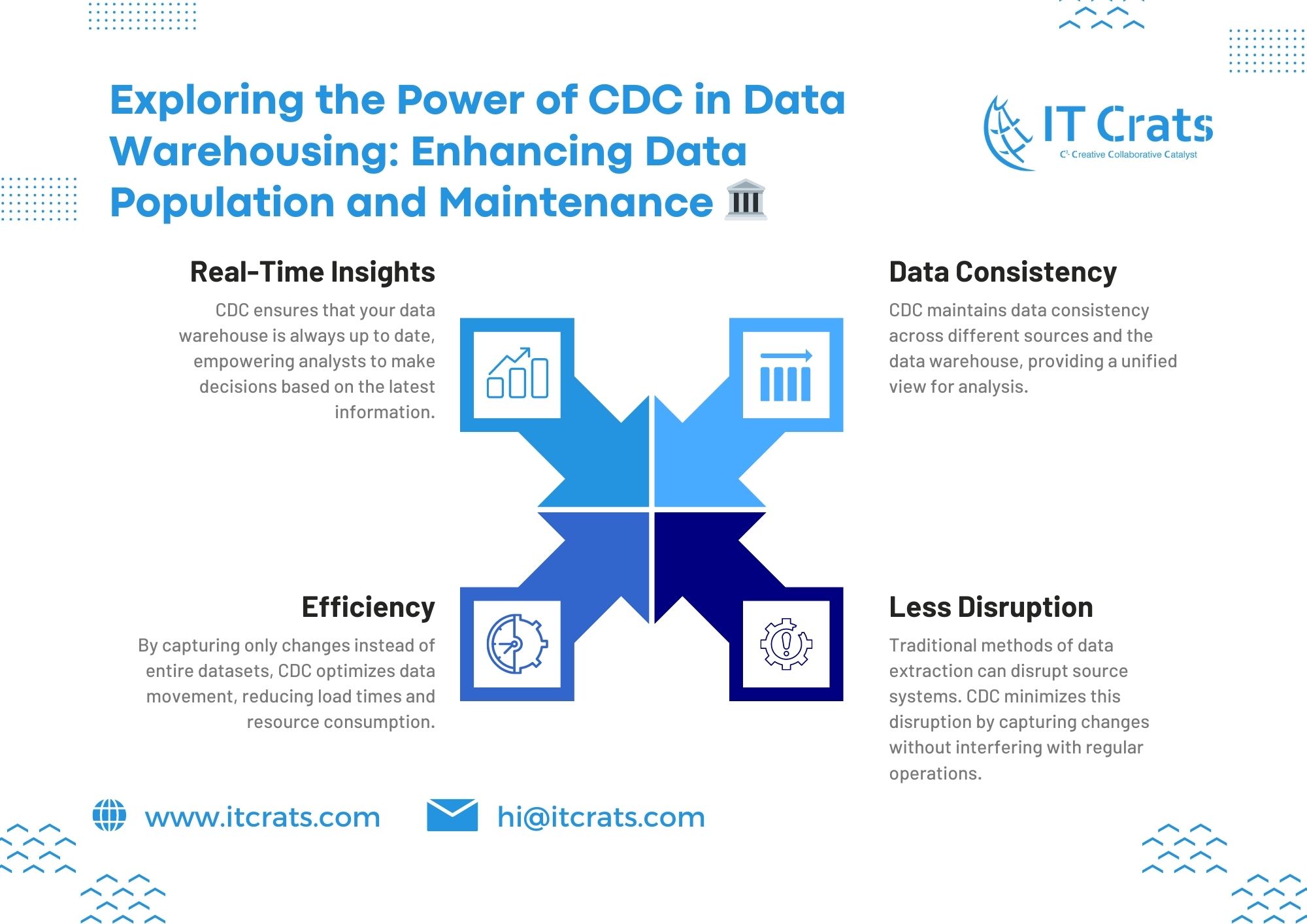
In the bustling world of data management, Change Data Capture (CDC) emerges as a pivotal player, particularly when it comes to the realm of data warehousing. Imagine data warehousing as a grand library, and CDC as the meticulous librarian who ensures every new book and every updated page is accurately cataloged and readily accessible. In this article, we’ll embark on a journey through the fascinating realm of CDC in data warehousing and uncover how it elevates the process of populating and maintaining these virtual libraries of information.
Understanding Data Warehousing
Before we delve into the magic of CDC, let’s set the stage by understanding data warehousing. Picture this: Your organization collects vast amounts of data from various sources — transactions, customer interactions, inventory updates, you name it. A data warehouse acts as a central repository, neatly organizing and storing this data for analytical purposes. It’s like having a curated collection of books, each containing valuable insights waiting to be uncovered.
CDC: The Emissary of Real-Time Updates
Now, enter Change Data Capture (CDC). CDC is the emissary that bridges the gap between your data sources and the data warehouse. Just as a librarian updates the library’s catalog whenever a new book arrives, CDC captures and propagates individual data changes from source systems to the data warehouse. It’s all about keeping your data warehouse’s shelves stocked with the latest and most accurate information.
The Dance of Data Population
Imagine a book publisher releasing a new edition of a popular novel. CDC is the enthusiastic messenger that rushes to the library, updates the catalog, and places the new edition on the shelf. Similarly, when a customer places an order on your e-commerce platform, CDC swiftly carries that change to your data warehouse, ensuring the order details are immediately available for analytical queries.
A Symphony of Data Maintenance
Maintaining a data warehouse requires a symphony of precision. Think about a historical fiction section in the library. As new historical novels arrive, CDC ensures they are cataloged alongside existing titles. In the data world, CDC captures incremental changes like updated customer details and integrates them seamlessly into your warehouse. This ensures your analyses are based on the most recent and accurate data.
Benefits of CDC in Data Warehousing
- Real-Time Insights: CDC ensures that your data warehouse is always up to date, empowering analysts to make decisions based on the latest information.
- Efficiency: By capturing only changes instead of entire datasets, CDC optimizes data movement, reducing load times and resource consumption.
- Data Consistency: CDC maintains data consistency across different sources and the data warehouse, providing a unified view for analysis.
- Less Disruption: Traditional methods of data extraction can disrupt source systems. CDC minimizes this disruption by capturing changes without interfering with regular operations.
In Conclusion: CDC Transforms Data Warehousing
Change Data Capture is the guardian angel of data warehousing, ensuring that your analytical haven is consistently enriched with the freshest insights. Just as a diligent librarian curates and updates a library’s collection, CDC populates and maintains your data warehouse with unwavering accuracy. It’s the bridge that connects the dynamic world of data sources to the structured universe of data warehousing.
So, the next time you query your data warehouse for insights that shape your decisions, remember the quiet heroics of CDC silently working behind the scenes. It’s the unsung hero that transforms data warehousing from a static archive to a dynamic fountain of intelligence. 🌐📊
Need guidance on implementing CDC? Reach out to us at hi@itcrats.com. Let’s embark on a data-driven journey together! 🌟
#ChangeDataCapture #DataWarehousing #RealTimeInsights #DataPopulation #DataMaintenance #DataIntegration #BusinessIntelligence











